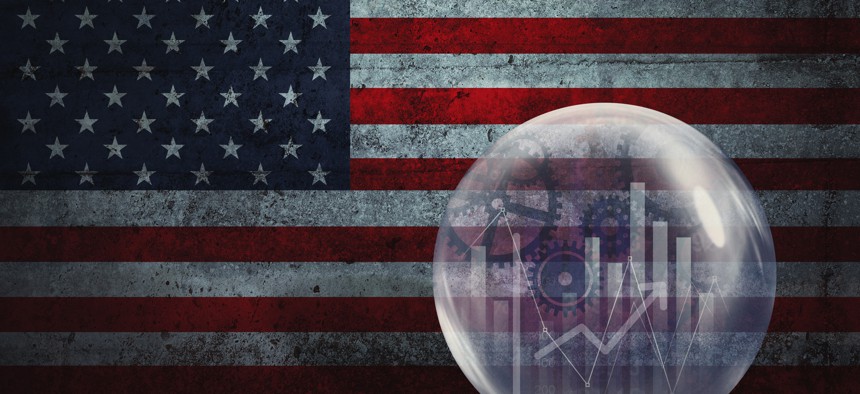
Sean Gladwell/Getty
Biden’s Dilemma, Part 1: The Federal Government’s Job Rating Has Dropped By Half
The first in a series of infographics on Americans’ views of government reform heading into the 2024 election.
President Biden heads toward the 2024 presidential campaign with the federal government’s job rating in decline, support for a smaller government increasing, and the demand for major government reform at a 30-year high. This series of charts and graphs explores the current landscape when it comes to Americans’ views of government reform.
Biden must confront the partisan divisions in the federal government’s performance ratings. In interviews conducted in January 2023, 40% of Democratic respondents gave the feds an excellent or good rating, compared to just 7% of Republicans. Although the two parties shared some common ground, with 40% of Democrats and 61% of Republicans in favor of very major government reform, the divide on partisan preferences for bigger vs. smaller government provide little encouragement.
Americans already support Biden’s Plan to Guarantee Government Works for the People. At the same time, they want an end to government breakdowns, faster customer service at federal offices, and easy access to online resources.
The good news for Biden is that he has a vetted list of government reforms that can be enacted and implemented well before November 2024. The bad news is that he has, by my count, already faced 10 government breakdowns on his watch, with more likely to come.

The trend lines and analyses presented in this series come from stand-alone random-sample surveys conducted by Lake Research Partners, Maguire Research Services, the Pew Research Center, SSRS, and the University of Pennsylvania Annenberg Public Policy Center. Occasional data points were also harvested from search engines managed by survey aggregators such as PollingReport.com, the Roper Center’s iPOLL database, and publicly available Pew Research Center surveys dating back to 1997. All survey findings were based on random-sample surveys of at least 1,000 respondents interviewed by cell phone and landline, with estimated error rates of 3% to 4% at a 95% confidence level.
NEXT STORY: How IRS Plans to Hire Thousands of Employees







